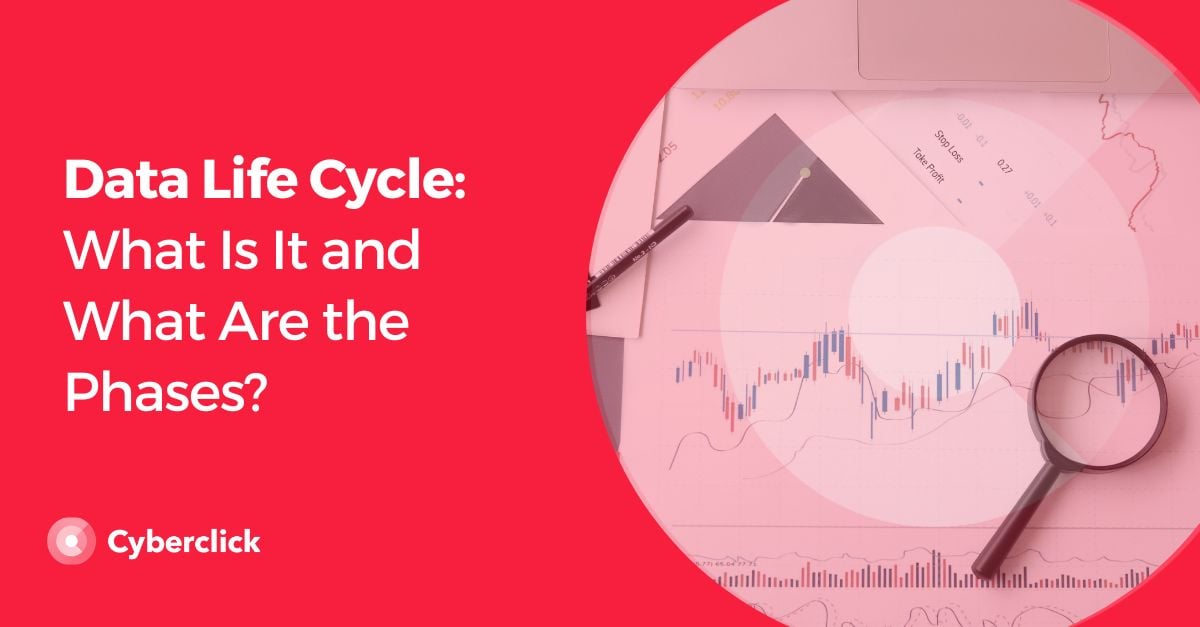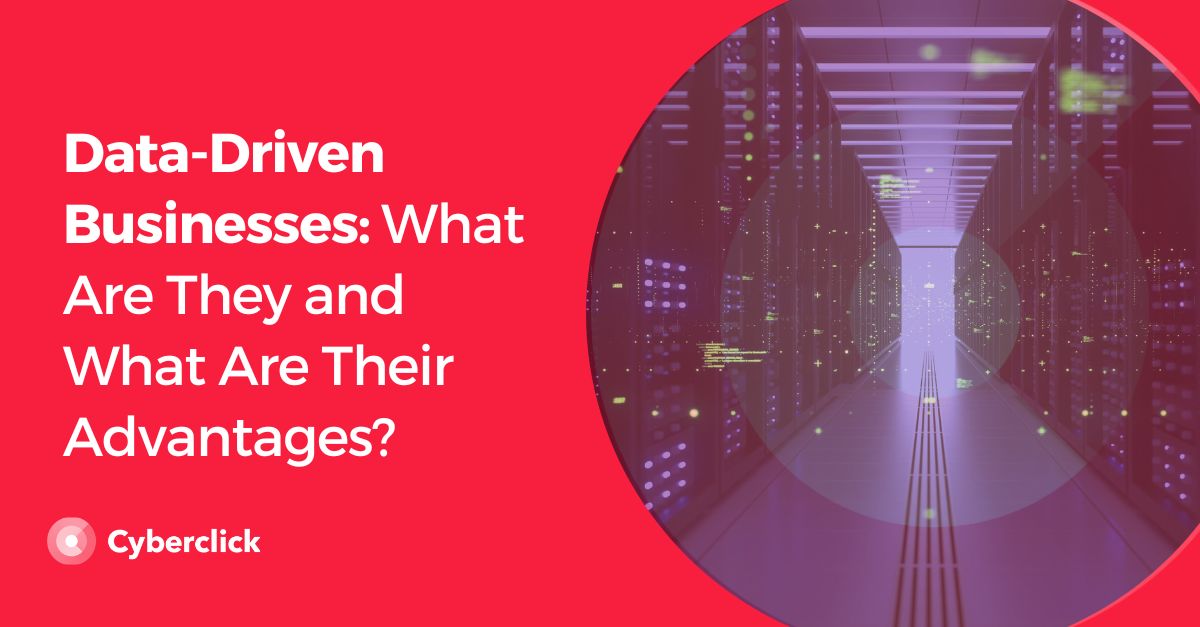Ever since the emergence of Big Data in the marketing world, the field of data science has undergone significant transformations in how data is collected and analyzed. The process of extracting valuable insights from data to inform strategic decision-making has evolved into a well-defined and structured approach known as the data life cycle. In this article, we will delve into the intricacies of this process, highlighting its various stages and their significance.

What Is the Data Life Cycle?
The data life cycle, also known as information life cycle or data life cycle management, is a multi-stage process that encompasses the entire lifespan of data, from its creation to its eventual obsolescence. The progression from one stage to another is contingent upon meeting specific requirements.
It is crucial to recognize the cyclical nature of the data life cycle. The information gleaned from one data project can often be repurposed for subsequent projects, allowing the last stage of the cycle to initiate a new iteration of the first stage, and so on.
For organizations seeking to conduct comprehensive research that involves analyzing large volumes of data, maximizing the potential of each stage in the data life cycle and implementing efficient processes is imperative.
What Is the Importance of the Data Life Cycle?
By effectively implementing each stage of the data life cycle, an organization can optimize the generation, utilization, and reuse of data, leading to higher quality information that serves as a solid foundation for decision-making. Furthermore, the data life cycle plays a crucial role in maintaining data quality throughout its useful lifespan.
Another significant benefit of the data life cycle is its contribution to enhancing data security within an organization. By adhering to the data life cycle process, a company can mitigate the risks of cyber-attacks and prevent catastrophic data losses, thus promoting a safer data environment.
In summary, the data life cycle not only maximizes the value of data but also serves as a robust risk management strategy, safeguarding against misuse and ensuring data is used in a safe and responsible manner.
The 5 Phases of the Data Life Cycle
There is no one-size-fits-all interpretation of the data life cycle. While some sources may divide it into seven phases, others may prefer a simpler approach with five stages. In this case, we have chosen the latter as we believe it better conveys the process. With that in mind, the data life cycle is composed of:
- Creation phase
- Storage phase
- Use phase
- Archiving phase
- Deletion phase
Below we explain them in detail.
Creation
The first phase of the data life cycle is the creation of raw data. Raw data is obtained through various techniques, methods, and data collection tools used in data science. This data can be expressed in multiple formats, such as JPG, PDF, Word, etc.
In total, a company can capture or generate data in three different ways:
- By acquisition: In this case, the company purchases data from external sources, and the data is produced externally to the organization.
- By input: The company's internal personnel manually obtain new data.
- By creation: Data is captured by devices in different business processes.
Saving
Once raw data is obtained, it is crucial to store it securely to protect against potential attacks or computer errors. Implementing a recovery process can add an additional layer of protection.
This phase is one of the most delicate in the data life cycle, because depending on the type of raw data, its requirements and architecture, it will have to be stored in one way or another. In this sense, depending on whether the data is structured or unstructured, it will be stored in two possible ways:
- Structured: Structured data is data that adheres to a standardized format, has a well-defined structure, and follows a data model, making it accessible to both humans and programs. Relational databases are commonly used to store structured data. These databases allow data to be organized in tables, making them highly accessible and easily identifiable.
- Unstructured: Unstructured data, on the other hand, lacks a defined architecture or structure, and does not adhere to any predefined data model. As a result, unstructured data cannot be stored in a conventional relational database, but must be stored in a non-relational or NoSQL database, which are commonly used in data science. These databases are designed to handle unstructured data efficiently, providing flexibility and scalability for data analysis and processing.
Use
During this stage of the data life cycle, the data is finally put to good use. Data serves as a fundamental element in a company's decision-making process, whether it's related to sales, marketing, or internal operations. It is crucial that different teams have access to the data, so they can participate in the decision-making process with solid arguments and understand the significance of their work. Similarly, customers, suppliers, or collaborators may also need access to relevant data.
To share and expose the data in a comprehensible way for all stakeholders, it is common to create reports and perform analytics during this phase of data use. The work of data science experts in this stage must be precise and accurate, as the collected data will play a critical role in determining the company's direction and outcomes.
Archiving
Once the data is no longer actively used for decision-making in the organization, it is time to archive it. Data archiving involves copying the data into a designated space where it can be stored and retrieved if needed in the future.
During this phase of the data life cycle, no active maintenance is typically performed on the data. However, if the need arises to reuse the archived data, it can be restored and retrieved for further analysis or other purposes, as mentioned previously. Proper data archiving practices ensure that data remains accessible and retrievable when needed, while minimizing the resources required for its storage and maintenance.
Deletion
It is inevitable that archived data will accumulate over time and occupy storage space. While having infinite storage would be ideal, it is not feasible due to the associated costs not being profitable for the company. As a result, cleansing and deleting old and unused data becomes a necessity in any organization.
Typically, the process of data deletion is performed from the location where it has been archived, and it is crucial to ensure that the deletion is carried out accurately and the data's disappearance is guaranteed.
It's important to remember that data must be stored for a certain period of time before it can be deleted. Data cannot be deleted at the organization's discretion, as it must be retained for the required statutory period. After this timeframe, the data can be deleted at the company's discretion.
What Are the Benefits of Good Data Life Cycle Management?
Implementing a robust data life cycle in a company is crucial to effectively utilize data. Here are the four key benefits that a company can experience by utilizing the information collected in this manner.
Better Business Decisions
Data is your greatest ally when it comes to creating the best strategies for your business. With this methodology, you can ensure that your database is kept clean, authentic, and up-to-date.
Greater Information Security
No company is free from cyber-attacks, but you can take every measure possible to keep them at bay and ensure the safety of your data. We understand that as a company, data security is a top priority. Implementing this data life cycle correctly will help you keep your data as safe as possible from leaks, misuse, and cyber-attacks.
Proper Compliance
As you are aware, data is under the spotlight of current regulations, and as a company, it is crucial to comply with the regulations imposed to avoid penalties. We have previously discussed the importance of storing data for a designated period of time. This is a critical aspect that should not be overlooked during the implementation of this data life cycle. Ensuring compliance with relevant regulations will safeguard your company from potential legal and financial consequences.
More Reliable Data
As emphasized throughout this article, the correct implementation of this data life cycle methodology ensures the reliability and consistency of data in your organization. This prevents decision-making based on outdated or erroneous data, thereby safeguarding the integrity and accuracy of your business decisions. Making informed decisions based on accurate and up-to-date data is crucial for the success of any organization.
Responsable de la estrategia de contenidos y visibilidad en Cyberclick, con enfoque Allbound y especialización en posicionamiento SEO, GEO y automatización con IA. Gestión avanzada del CRM con HubSpot: base de datos, workflows, lead nurturing, scoring y reporting. Experiencia en marketing digital, comunicación corporativa y periodismo, uniendo estrategia, creatividad y tecnología para captar y convertir leads cualificados.
Responsible for content and brand visibility strategy at Cyberclick, with an Allbound approach and specialization in SEO, GEO (Generative Engine Optimization), and AI-powered automation. Advanced HubSpot CRM management: database segmentation, workflows, lead nurturing, scoring, and reporting. Background in digital marketing, corporate communications, and journalism—combining strategy, creativity, and technology to attract and convert qualified leads.






Leave your comment and join the conversation